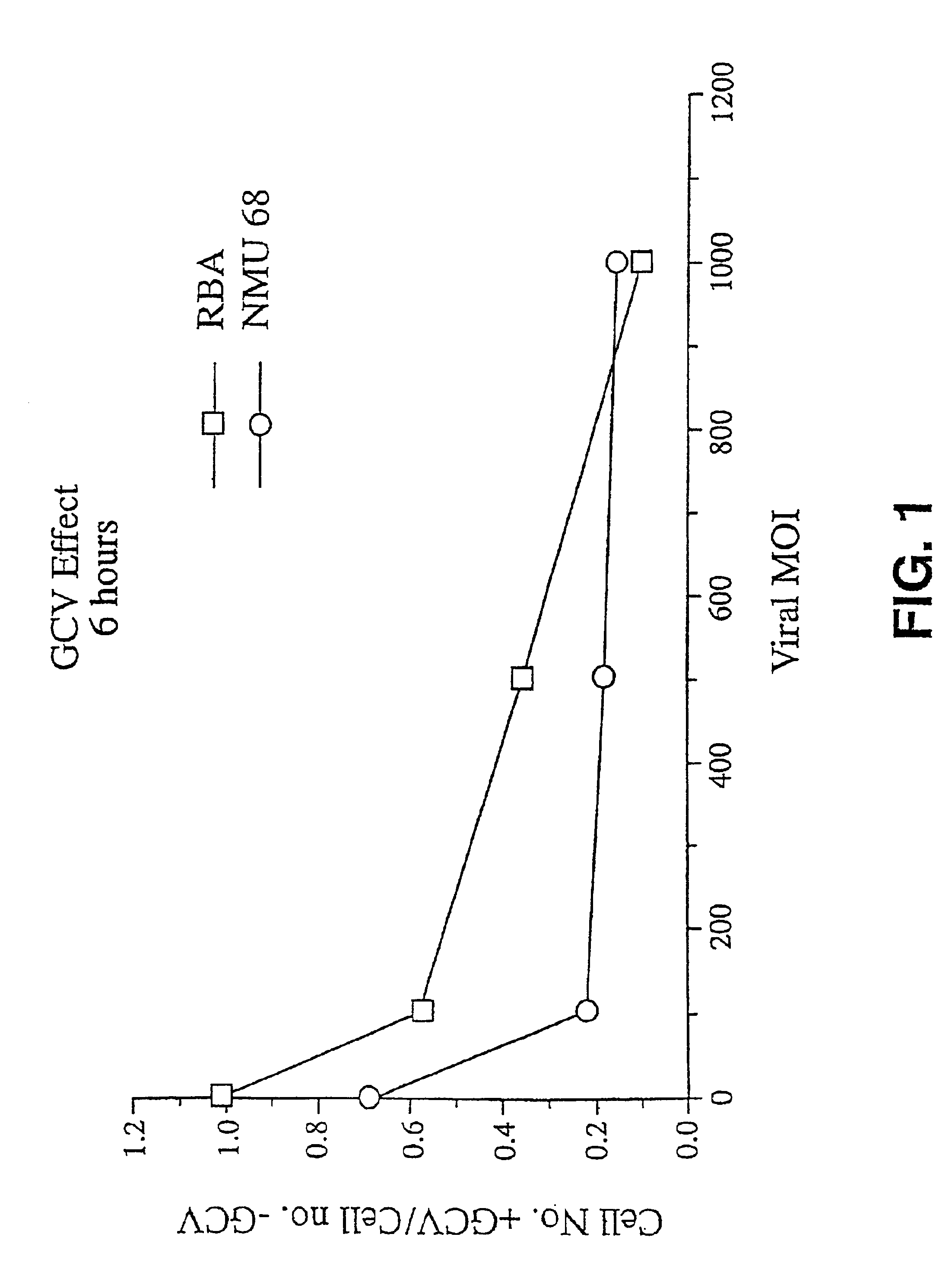Prophylactic and therapeutic treatment of the ductal epithelium of a mammary gland for cancer
- Summary
- Abstract
- Description
- Claims
- Application Information
AI Technical Summary
Problems solved by technology
Method used
Image
Examples
example 1
[0040]This example demonstrates the successful delivery of virus and other agents into the mammary ductile tree by a single injection through the teat.
[0041]ADV / CMV-β-gal (from Dr. William Burns, Johns Hopkins University) is an adenoviral 5 vector constructed with a β-galactosidase gene controlled by a cytomegaloviral promoter. It was delivered into the mammary gland by injection of a viral suspension in 20 μl of 0.2% trypan blue in Tris buffer through the teat of a rat. The nipple was extruded, and the sphincter removed by excising the nipple. In the rat, the muscle prevents fluid from regurgitating into the breast and had to be excised in order to visualize the ductal opening and administer the agent. Trypan blue was used as a tracking dye to ensure correct delivery to the ductile tree. Injection about 30 days postpartum resulted in the mammary epithelial tree being clearly visible. Ethyl alcohol (70%) was also successfully delivered by a single injection through the teat.
example 2
[0042]This example demonstrates that adenovirus can efficiently transduce human mammary epithelial cells in vitro.
[0043]ADV / CMV-β-gal was used to transduce HBL100 mammary epithelial cells in vitro. The β-gal enzyme in this construct contains a nuclear localization signal and results in dense nuclear staining. HBL100 cells (102) were plated in 24-well plates, and transduced with virus at various doses and stained with X-gal 48 hrs later. Essentially all cells were infected at a moi=104.
[0044]This experiment also has been performed in human mammary tumor cells MCF-7 (American Type Culture Collection (ATCC), Rockville, Md.), human mammary epithelial cells MCF-10A (ATCC), and two rat mammary cancer cell lines, RBA (from Dr. Leonard Cohen) and 37-2 (from Dr. C. Marcelo Aldaz) with the same results. More efficient adenoviral constructs have been used, thereby achieving 100% infection at a moi=103. These experiments demonstrate successful infection by and expression of adenovirus carrying ...
example 3
[0045]This example demonstrates that infection with an AdHS-tk construct followed by GCV treatment effectively kills mammary tumor cells in vitro.
[0046]RBA and NMU68 are two rat mammary tumor cell lines derived from a DMBA- and a NMU-induced tumor, respectively [DMBA=dimethylbenz[a]anthracene, NMU=N′-nitro N′-methylurea]. Each cell line was plated at a density of 5×102 in 48-well plates (1.1 cm) and allowed to settle overnight. The next morning, they were transduced with AdHS-tk (Chen et al., PNAS(USA) 91:3054-57 (1994); obtained from S. Woo and E. Aguilar-Cordova, Baylor College of Medicine, Houston, Tex.) at titers of 0, 100, 500, and 1000 moi, and then, 6 hrs later, GCV (10 μg / ml) was added to the culture media. The cells were maintained in the presence of GCV for 3 days and then counted using trypan blue exclusion as a measure of cell viability. The cell numbers were normalized to the growth of cells in the absence of GCV. The results are shown in FIG. 1. More than 80% of the ce...
PUM
| Property | Measurement | Unit |
|---|---|---|
| Size | aaaaa | aaaaa |
| Fraction | aaaaa | aaaaa |
| Fraction | aaaaa | aaaaa |
Abstract
Description
Claims
Application Information
 Login to View More
Login to View More - R&D
- Intellectual Property
- Life Sciences
- Materials
- Tech Scout
- Unparalleled Data Quality
- Higher Quality Content
- 60% Fewer Hallucinations
Browse by: Latest US Patents, China's latest patents, Technical Efficacy Thesaurus, Application Domain, Technology Topic, Popular Technical Reports.
© 2025 PatSnap. All rights reserved.Legal|Privacy policy|Modern Slavery Act Transparency Statement|Sitemap|About US| Contact US: help@patsnap.com

